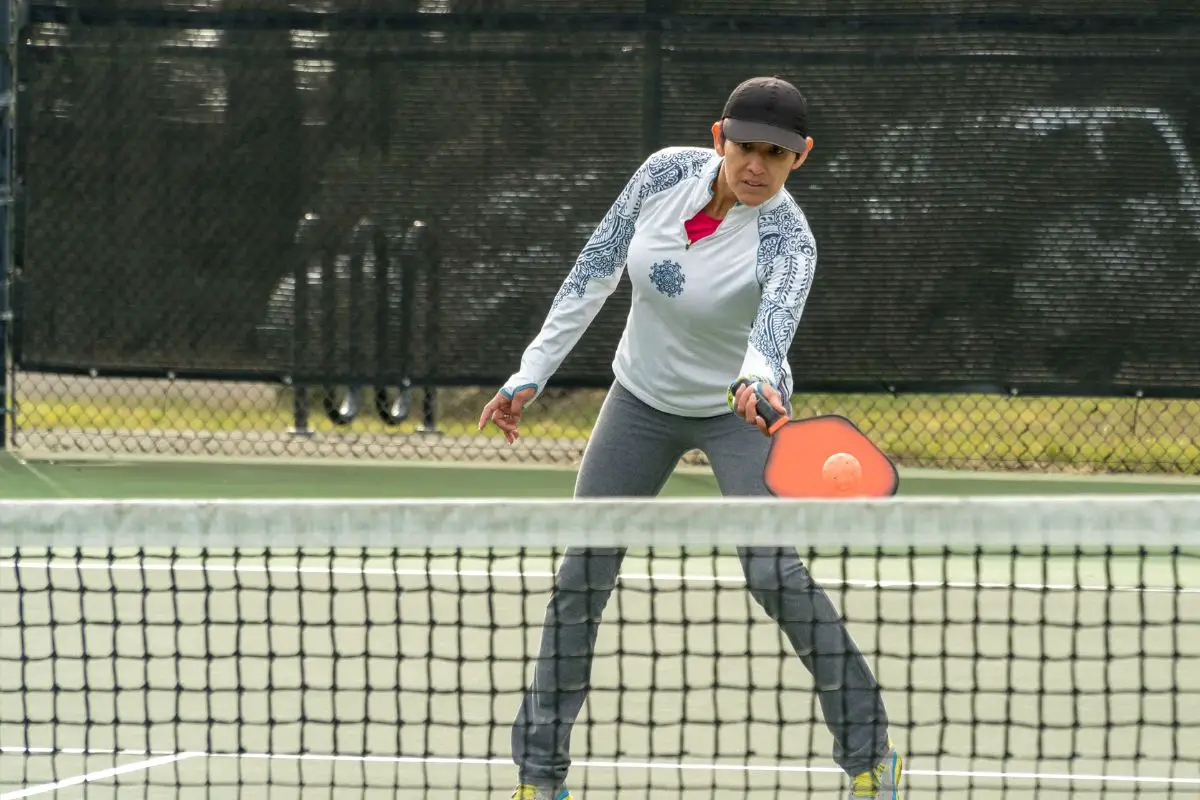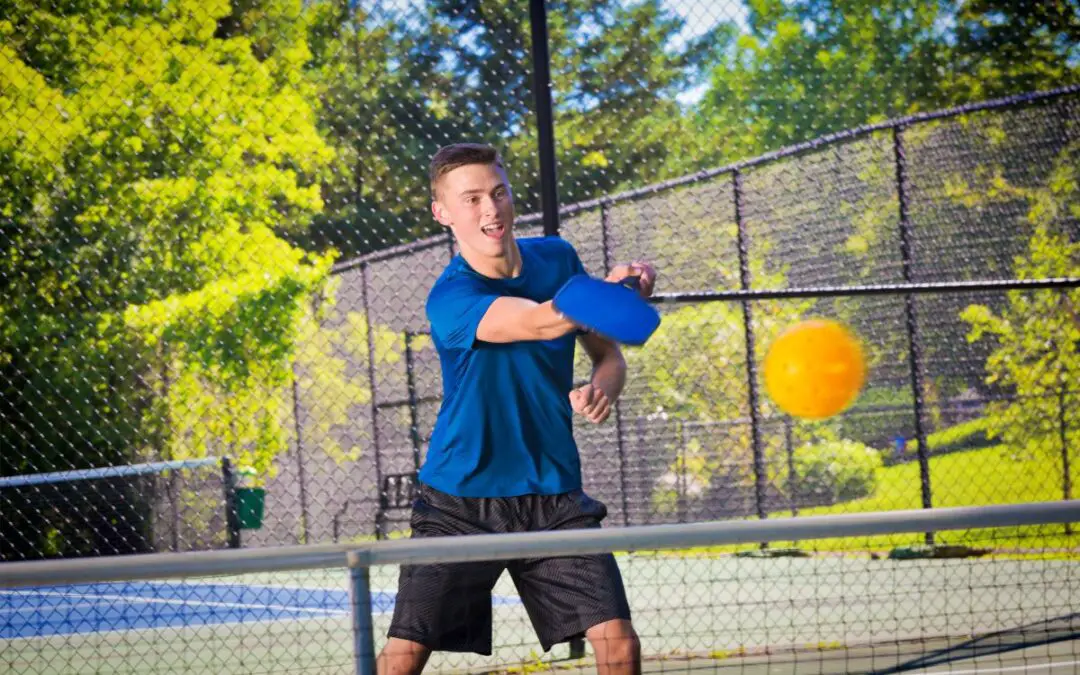Pickleball is a paddle sport that incorporates elements of tennis, badminton, and ping-pong. It was created on Bainbridge Island, Washington, US, in 1965.
Pickleball’s popularity has grown around the world, but in the Pacific Northwest in particular – so much so that it was named the fastest-growing sport in the US in 2021 and 2022, and in 2022, pickleball became the official state sport of Washington.
Some of pickleball’s appeal can be attributed to its versatility – the short learning curve means that it is a good option for people of many ages and fitness levels, and the play style can vary from friendly and family fun, to competitive.
It can also be played indoors or outdoors, and in singles or doubles (see also ‘How To Play Doubles Pickleball‘).
What’s The Difference Between Singles And Doubles?
The rules of pickleball remain largely the same in singles and doubles. There are some differences though.
In singles, each player only has one serve, meaning that once the server loses the point, the receiver will then switch to serving.
Also, the singles scoring system is slightly different.
Due to there only being one player per side, the score in singles will only consist of two numbers rather than three: the server’s score, and the receiver’s score.
The third number, which would be the second server’s score, is only recorded in doubles.
While there are a few rule changes, the main differences between singles and doubles in pickleball stem from the player’s experience of the game and the strategy involved.
Singles matches can be much more physically challenging due to one player having to cover the entirety of the court on their own.
Therefore it is essential to have a good level of physical fitness – strategy alone is unlikely to beat the opponent if the players have drastically different fitness levels.
Another difference is that the game can feel quite different when you don’t have a teammate to rely on for both morale boosts and splitting the physical demand.
What Are The Rules In A Game Of Singles Pickleball?
In case you are unfamiliar with the basic rules of pickleball, we will summarize them here before diving into the strategy aspect of the game.
In singles, with one player on each side of the net, the ball is served underhanded and diagonally toward the opponent, and the paddle must make contact with the ball when it is below the server’s waist.
The first serve is determined by a coin toss, with the winner choosing what position they would like to start in.
The server serves from the right side of the court when the score is even, and left when odd.
At least one foot should be positioned behind the baseline, while neither can contact the baseline or court until the ball has been hit.
After each serve, the ball must bounce off the ground on each side of the net before players can begin to volley the ball (hit it back in the air before it bounces).
Players cannot volley the ball at all if they are positioned in or on the border of the non-volley zone, or ‘kitchen,’ or even if they step into it after a volley.
The ball must bounce before being struck in these zones throughout the duration of the game.
Points are scored by the serving side (see also ‘Do you Serve From The Left Or Right In Pickleball?‘) when the opponent faults, and the serve switches to the other side of the court with each point scored.
The serving side alternates whenever the current server faults.
Beyond violating the service rules, there are several other ways to fault.
As previously mentioned, any volleys hit within the non-volley zone are faults, along with the ball being volleyed before it has bounced on each side of the net.
If the ball is hit into the net, or if any part of the player and their equipment touches the net, this is also a fault.
If the ball hits any player or their equipment, or any object before bouncing on the court, a fault has occurred.
If a serve does not land in the receiving court or the ball is hit out of bounds, or if the ball bounces twice before being struck, these are more ways to fault.
Generally, the first side to score 11 points while leading by at least 2 points wins, but the winning score can be higher in tournament games.

What Strategies To Use In Pickleball Singles
The fast-paced nature of pickleball singles and the fact that players have to cover their side of the court alone means that extra care has to be taken to avoid faulting, while finding ways to push the opponent into faulting.
One way to do this is by varying the hit style to keep the opponent on their toes.
Varying how deeply you return the ball can help tire out your opponent and catch them off guard, and they must be fast and nimble to comfortably return shots that are not within easy reach.
Returning the ball into the back corner, for instance, can hurt your opponent if they are too close to the baseline.
If you can identify your opponent’s weak spot, it can be beneficial to target your unexpected shots on their weaker side.
One of the most important parts of singles games is maintaining a strong position on the court.
Maintaining a centerline position means that you will be able to easily move to counter your opponent’s varied shots with more ease.
Speed is still paramount, so don’t get too comfortable. You should try to avoid playing the net, as it can leave the sides of the court vulnerable.
If you are in the non-volley zone and your opponent manages to hit the ball down the side of you and toward the back of the court, you will have a hard time trying to counter this move.
Conclusion
Pickleball (see also ‘How Often Should You Play Pickleball?‘) can become a much more physically and mentally challenging game when you decide to play singles.
Developing your technique in singles matches can strengthen your performance in doubles, as you’ll find them to be easier in comparison.
Honing your technique to improve your speed, physicality, and tactical thinking, will enable you to improve your pickleball skills on the whole (see also ‘What Is A Foot Fault?‘).
Just be sure to stay conscious of your side of the court, and not get too distracted when concentrating on your opponent.


